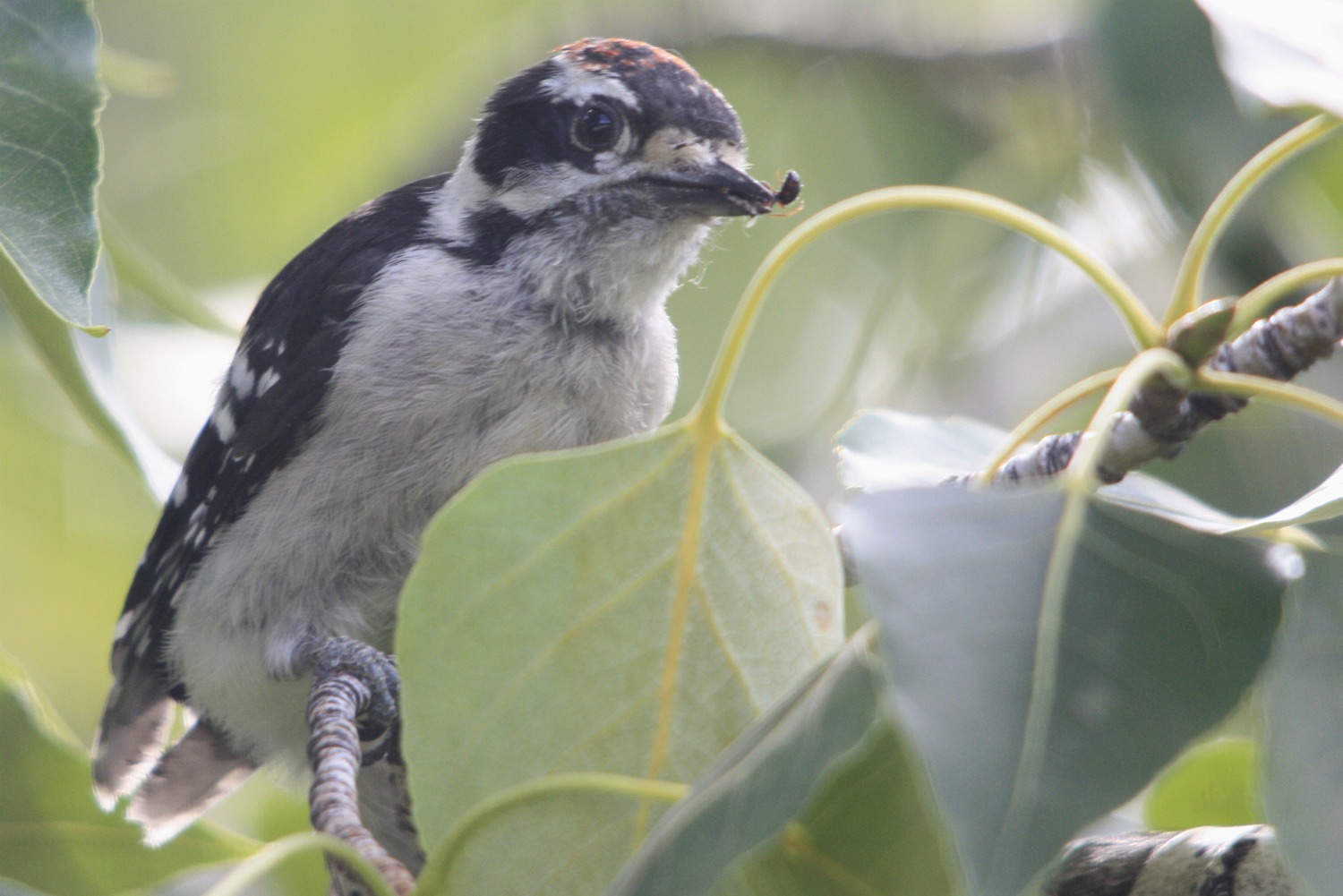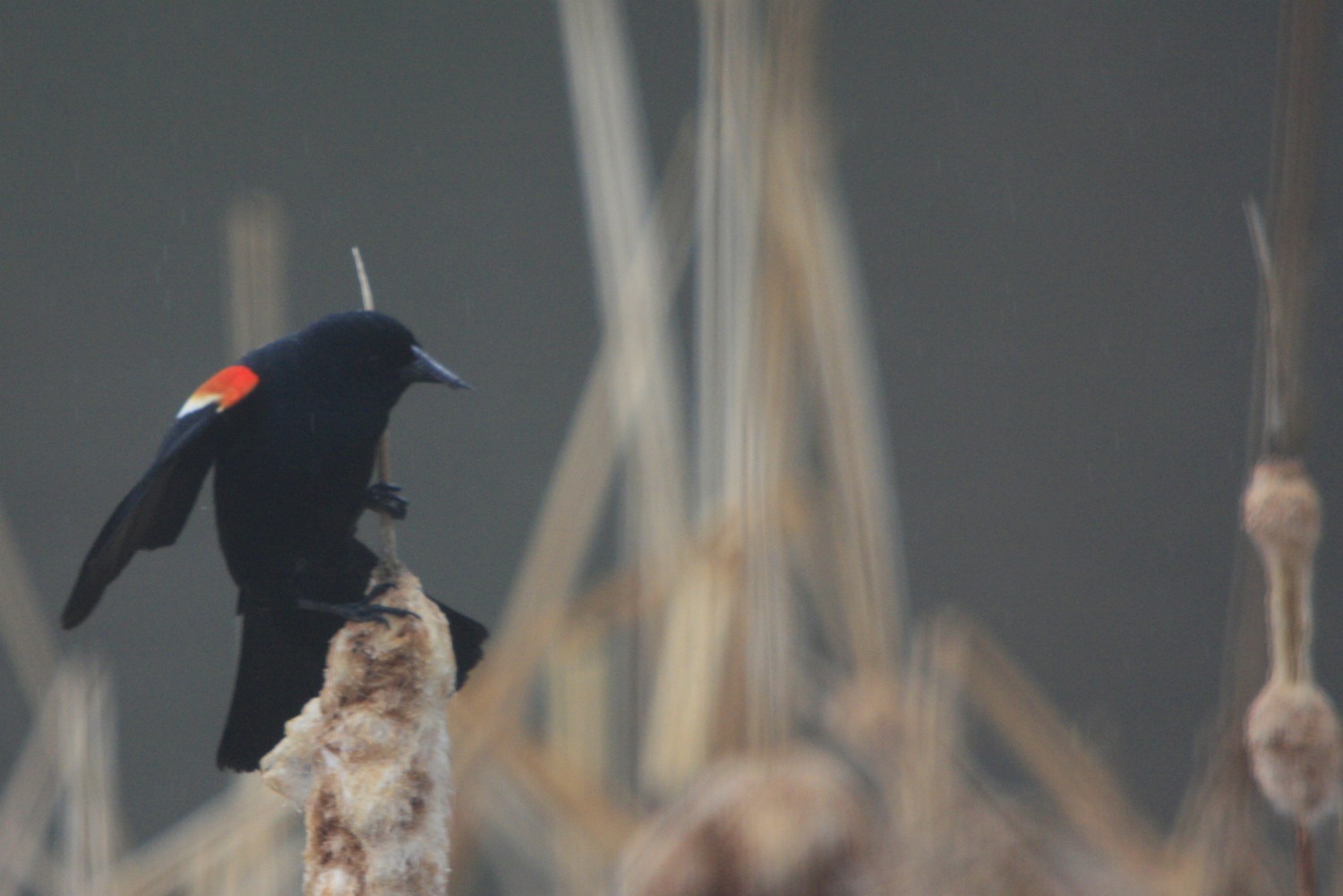While on my latest bike ride into Fish Creek Provincial Park, I came across one very special tree. I have started calling it: The Woodpecker Tree. Standing proud and tall on the banks of the creek, this poplar tree seemed to be a gathering place for woodpecker food. I abruptly stopped on the dirt path I was riding on because I had heard a Hairy Woodpecker calling. I approached the tree for closer inspection and I was surprised to see 2 Downy Woodpeckers and a large female Hairy Woodpecker. Much to my surprise I heard another Downy Woodpecker calling high up in the tree and I looked up to see a male Downy Woodpecker and a White-breasted Nuthatch. I then heard a tapping coming from the opposite side of the tree and found it to be a male Hairy Woodpecker tapping away. Eventually, my final count of woodpeckers came up to 3 Hairy Woodpeckers, 4 Downy Woodpeckers and the lone White-breasted Nuthatch.
This tree obviously fulfilled the nourishment needs for 7 woodpeckers and a nuthatch. As I continued to watch all these birds, I saw them eating insects, tapping at fungal growths on the tree and investigating sap.

After a dozen of minutes or so, the woodpeckers started to spread out into the surrounding area to hunt down more food. Yet some of the birds, stayed on the woodpecker tree, clearly enjoying the abundance of good food.

Now, I can’t help but wonder if this is a regular occurrence at this tree, or was it a one-time event?
Posted by Matthew Sim




























